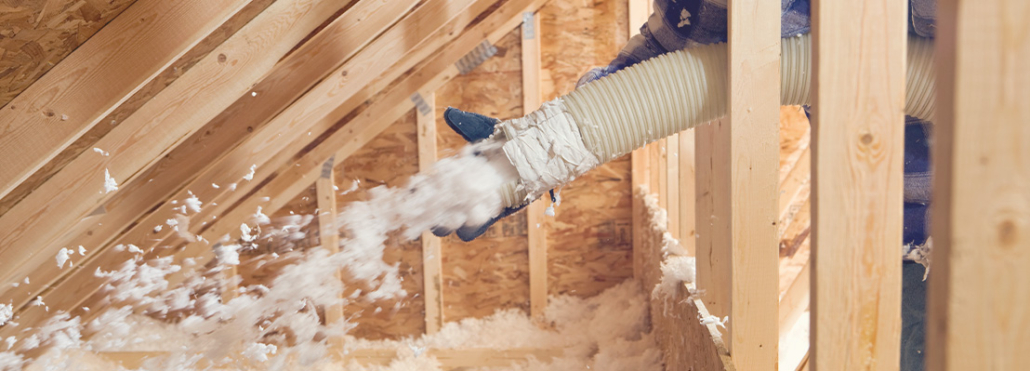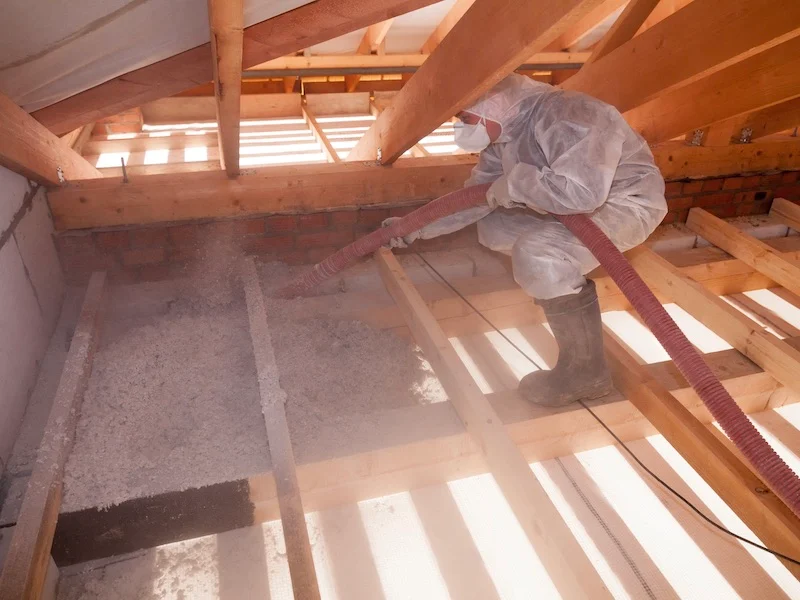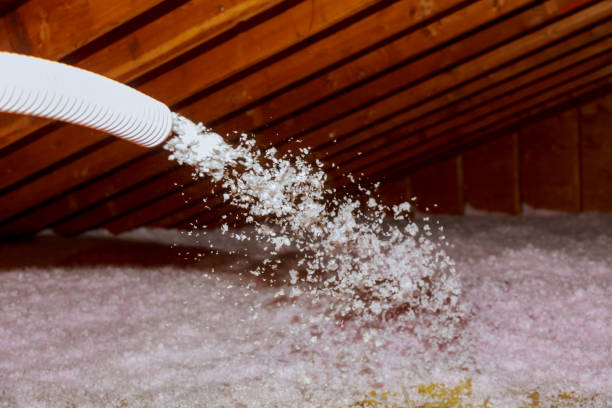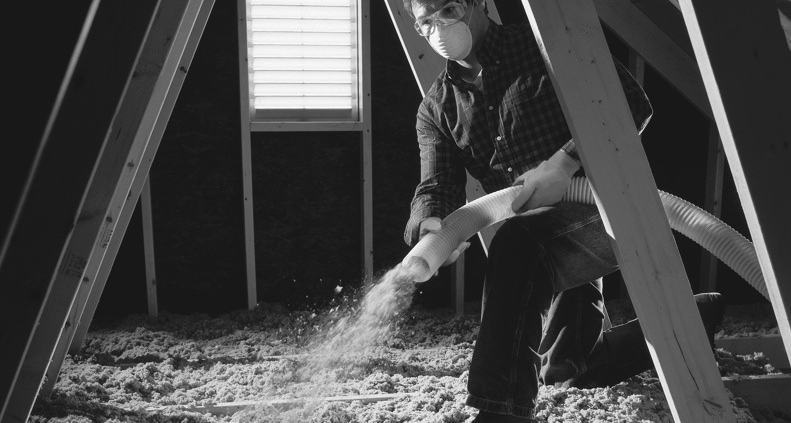Blown-In Attic Insulation: Achieving Optimal Density and Coverage for Climate Zones
Blown-in attic insulation offers flexibility and effective thermal protection when installed correctly. Achieving the right density and coverage is critical for energy efficiency, indoor comfort, and compliance with local building codes. Blown-in attic insulation offers flexibility and effective thermal protection when installed correctly. With an expert blown-in attic insulation service, achieving the right density and coverage becomes easier, ensuring energy efficiency, indoor comfort, and compliance with local building codes.This article examines strategies for optimizing blown-in insulation in various climate zones, helping residential and commercial property owners improve performance and reduce energy loss.
Why Density and Coverage Matter in Attic Insulation

Proper density and full coverage ensure consistent thermal performance, minimizing heat loss and preventing air gaps.
Understanding Density
Insulation density refers to the mass of material per unit volume. High-density installations reduce settling, improve R-value retention, and enhance air sealing.
Importance of Coverage
Incomplete coverage leads to cold spots, drafts, and uneven thermal resistance. Even high-R-value insulation underperforming due to gaps can increase energy consumption.
Performance Implications
Achieving uniform density and complete coverage ensures that attic insulation effectively slows heat transfer, maintains indoor comfort, and supports HVAC efficiency.
Types of Blown-In Insulation and Their Characteristics
Selecting the appropriate material is essential to meet climate-specific requirements and density goals.
Fiberglass Blown-In Insulation
Fiberglass offers moderate R-value per inch and resists moisture absorption. It requires careful installation to avoid gaps and maintain consistent thickness.
Cellulose Blown-In Insulation
Cellulose is denser than fiberglass, providing improved settling resistance and higher R-value per inch. Its composition includes fire-retardant additives, offering safety benefits in residential and commercial attics.
Comparative Table: Key Properties of Blown-In Insulation
| Feature | Fiberglass | Cellulose |
|---|---|---|
| R-Value per Inch | 2.5–3.7 | 3.2–3.8 |
| Density (lb/ft³) | 0.5–0.9 | 1.0–1.3 |
| Settling Resistance | Moderate | High |
| Moisture Absorption | Low | Moderate |
| Fire Resistance | Requires treatment | Fire-retardant additive |

Achieving Optimal Density for Different Climate Zones
Climate impacts the recommended R-value and insulation depth. Installation strategies must adapt to local conditions for maximum effectiveness.
Cold Climate Zones
Higher R-values are required to minimize heat loss. Dense installations prevent settling and maintain thermal resistance over time. Additional layers may be necessary to achieve recommended depth.
Mixed Climate Zones
Moderate R-values balance heating and cooling needs. Ensuring uniform density is critical to prevent seasonal energy inefficiencies.
Hot-Humid Climate Zones
Moisture-resistant materials and proper attic ventilation prevent condensation and mold growth. Dense coverage reduces thermal bridging, maintaining indoor comfort during peak temperatures.
Installation Techniques for Maximum Coverage
Proper installation methods determine the effectiveness of blown-in insulation.
Equipment and Blowing Techniques
Using calibrated blowing machines ensures even material distribution and avoids over- or under-dense areas. Multi-directional blowing addresses hard-to-reach cavities.
Layering and Depth Management
Applying insulation in layers allows precise density control. Verifying thickness at multiple points ensures consistent coverage across the entire attic.
Air Sealing Integration
Sealing penetrations, ducts, and vents before installing insulation maximizes thermal performance and prevents energy loss.
Maintenance and Performance Monitoring
Periodic assessment ensures insulation continues to provide optimal thermal resistance.
Settling and Compression
Over time, blown-in insulation may settle slightly. Monitoring depth and adding supplemental insulation maintains recommended R-value and performance.
Moisture and Mold Prevention
Inspecting attics for leaks, condensation, or roof damage protects insulation integrity and indoor air quality. Proper ventilation complements insulation in high-humidity areas.
Performance Verification
Thermal imaging or blower door testing identifies gaps, uneven coverage, or thermal bridging, providing actionable data for corrective measures.

Conclusion
Achieving optimal density and coverage in blown-in attic insulation is crucial for energy efficiency, indoor comfort, and long-term performance. Selecting the appropriate material, adapting installation techniques to climate zones, and integrating air sealing strategies ensure uniform thermal resistance and prevent common issues like settling, drafts, and moisture damage.
Regular inspection and maintenance, combined with climate-specific R-value targets, maximize the effectiveness of blown-in insulation. Residential and commercial property owners who follow these strategies benefit from consistent indoor comfort, lower energy costs, and a durable thermal barrier that supports sustainable building performance.
Visit us to learn more: https://foamworxinsulation.com/?utm_source=backlink
FAQs
What density should blown-in attic insulation achieve for maximum performance? Optimal density depends on material type and climate zone. Cellulose typically targets 1.0–1.3 lb/ft³, while fiberglass is around 0.5–0.9 lb/ft³. Proper density prevents settling and maintains R-value over time.
How do I ensure complete coverage in hard-to-reach attic areas? Use calibrated blowing equipment and multi-directional techniques. Applying insulation in layers ensures even coverage in corners, around vents, and along eaves.
Can blown-in insulation prevent moisture problems in humid climates? Yes, when combined with proper attic ventilation and moisture-resistant materials, it reduces condensation risk and mold growth.
How often should attic insulation be inspected? Annual inspections for settling, moisture, or damage ensure performance. Thermal imaging and blower door tests provide precise assessment of coverage and density.
Is cellulose better than fiberglass for cold climates? Cellulose offers higher R-value per inch and improved settling resistance, making it more effective in maintaining thermal resistance in cold climates.
Reviewer: Jacob Wright has 6 years of experience in spray foam insulation. He reviewed this content and made sure it focused on the real decisions small business owners deal with every day.



Leave a Reply
Want to join the discussion?Feel free to contribute!